The samurai (or bushi) were the warriors of premodern Japan. They later made up the ruling military class that eventually became the highest ranking social caste of the Edo Period (1603-1867). Samurai employed a range of weapons such as bows and arrows, spears and guns, but their main weapon and symbol was the sword.
Samurai were supposed to lead their lives according to the ethic code of bushido ("the way of the warrior"). Strongly
Confucian in nature, bushido stressed concepts such as loyalty to one's master, self discipline and respectful, ethical behavior. Many samurai were also drawn to the teachings and practices of
Zen Buddhism.
History
The samurai trace their origins to the
Heian Period campaigns to subdue the native Emishi people in the
Tohoku Region. Around the same time, warriors were increasingly hired by wealthy landowners that had grown independent of the central government and built armies for their own protection.
The two most powerful of these landowning clans, the
Minamoto and Taira, eventually challenged the central government and battled each other for supremacy over the entire country.
Minamoto Yoritomo emerged victorious and set up a new military government in 1192, led by the
shogun or supreme military commander. The samurai would rule over Japan for most of the next 700 years.
During the chaotic
era of warring states in the 15th and 16th centuries, Japan splintered into dozens of independent states constantly at war with one another. Consequently, warriors were in high demand. It was also the era when
ninja, warriors specialized in unconventional warfare, were most active. Many of the famous samurai
movies by Kurosawa are set during this time.
The country was eventually reunited in the late 1500s, and a rigid social caste system was established during the
Edo Period that placed the samurai at the top, followed by the farmers, artisans and merchants respectively. During this time, the samurai were forced to live in
castle towns, were the only ones allowed to own and carry
swords and were paid in
rice by their
daimyo or feudal lords. Masterless samurai were called
ronin and caused minor troubles during the 1600s.
Relative peace prevailed during the roughly 250 years of the
Edo Period. As a result, the importance of martial skills declined, and many samurai became bureaucrats, teachers or artists. Japan's feudal era eventually came to an end in
1868, and the samurai class was abolished a few years afterwards.
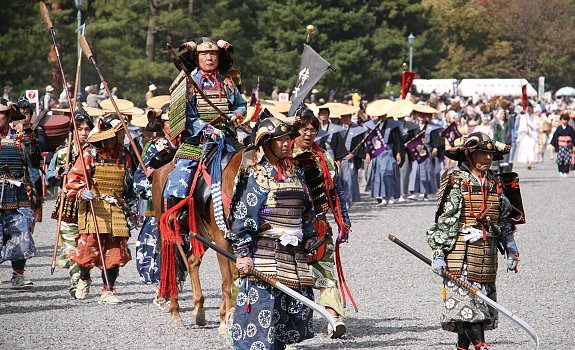 Samurai march in the Jidai Matsuri Parade in Kyoto
Samurai march in the Jidai Matsuri Parade in Kyoto
How to appreciate the samurai today
Samurai related attractions can be found across Japan in form of castles, historic residences, museums, historically themed amusement parks and dress up tours. The following are some of the many ways tourists can learn about and experience samurai culture and lifestyle today:
Castles
Castles developed over the centuries from small defensive forts built high up on mountains into massive complexes at the heart of cities, where they served as the status symbol, administrative center and residence of the local lord. The lord's samurai vassals resided in the town surrounding the castle: the higher their rank, the closer they were allowed to reside to the castle.
Over a hundred castles exist in Japan today, including twelve original castles (that survived the post-feudal years intact) and many modern reconstructions. Most of the castles contain exhibits or entire museums that display samurai artifacts and lifestyle. See our
castle page for more information.
Men in samurai outfits at Kumamoto Castle (left) and Aizu's Tsuruga Castle (right)
Samurai Districts and Mansions
In order to separate the social castes, samurai were forced to reside in designated districts of the castle towns during the
Edo Period. Today, a few of these samurai districts remain preserved with their historic atmosphere of narrow lanes, earthen walls, entrance gates and residences, and allow tourists to get a glimpse into the samurai lifestyle. In other cases, single samurai mansions have been preserved and opened to the public. Below is a list of some of the better of these districts and residences:
Museums
While most history museums in Japan display at least a few samurai swords or armors, there are a few specialized museums that exclusively feature relics of the samurai.
Some of these include the
Sword Museum in
Tokyo, which displays one of the largest public sword collections in the country; the
Tokugawa Art Museum in
Nagoya, which exhibits armor, swords, tea utensils, artwork and household items; and the
Maeda and
Honda Museums in
Kanazawa, which display relics of the two most prominent samurai families in the region.
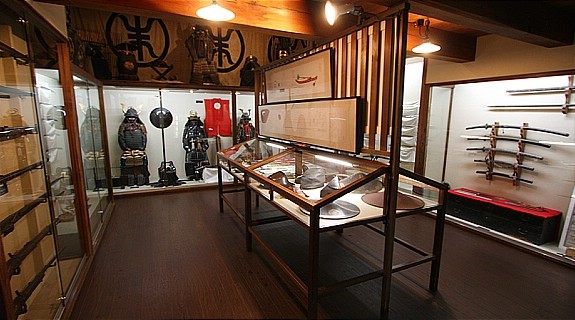 An exhibition room in the Aoyagi House in the Kakunodate Samurai District
An exhibition room in the Aoyagi House in the Kakunodate Samurai District
Theme Parks
There are a few history based theme parks around Japan that feature recreated towns from the feudal era. The parks typically offer a variety of attractions, live shows, museums, shops and restaurants and are usually staffed by a whole host of "townspeople" in period costumes, making them a fun way to experience the culture and history of samurai.
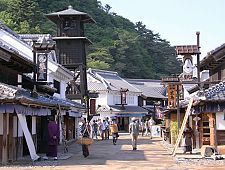 |
| Nikko Edomura (more details) |
Hours: 9:00 to 17:00 (9:30 to 16:00 December to mid March)
Closed: Wednesdays and December 8 to 21
Admission: 4500 yen |
| Located in Kinugawa, Nikko Edomura is the best among Japan's history theme parks. The park consists of a recreated Edo Period (1603-1867) town populated by townspeople, samurai and ninja in period costumes. The park offers a variety of traditional stage performance, comedy and ninja shows, as well as museums, shops and restaurants. |
|
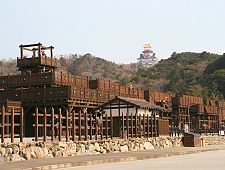 |
| Ise Azuchi-Momoyama Bunka Mura (more details) |
Hours: 9:00 to 17:00 (9:30 to 16:00 mid November to mid March)
Closed: Some days in February
Admission: 2500 to 3900 yen |
| This history theme park in Ise is set during the Azuchi-Momoyama Period (1573-1603) and consists of a castle town at the base of a replica of Azuchi Castle. It features a small ninja museum, trick maze, haunted mansion, ghost temple, various shops and restaurants, as well as traditional entertainment and live ninja and samurai shows. |
|
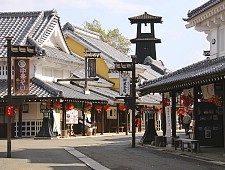 |
| Noboribetsu Date Jidaimura |
Hours: 9:00 to 17:00 (until 16:00 November to March)
Closed: No closing days
Admission: 2900 yen |
| Noboribetsu Date Jidaimura is another history theme park that features town life during the Edo Period. It is located inNoboribetsu, Hokkaido. Like the theme parks listed above, it offers several attractions, shows, shops and restaurants amid a town populated by townspeople in period costume, but it is smaller in size than the other two. |
|
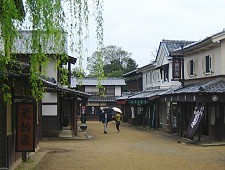 |
| Toei Uzumasa Eigamura (more details) |
Hours: 9:00 to 17:00 (9:30 to 16:00 December to February)
Closed: December 27 to 31
Admission: 2200 yen |
| Toei Uzumasa Eigamura is a film set and historical theme park in Kyoto. It features Edo Period themed streets, a replica of the old Nihonbashi Bridge, a traditional court house, a Meiji Period police box and part of the former Yoshiwara red light district which are used in the filming of historical movies and television dramas. |
|
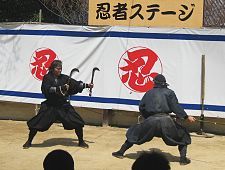 |
| Iga Ueno Ninja Museum (more details) |
Hours: 9:00 to 17:00
Closed: December 29 to January 1
Admission: 700 yen |
| Locate in Iga Ueno, home to one of the leading ninja schools during Japan's feudal era, this small but excellent ninja museum consists of a ninja residence with revolving walls, trap doors, hidden compartments and exhibition halls displaying tools and weapons of the trade. Live shows and ninja demonstrations are held daily at the museum. |
|
Dress up Tours
Several travel companies offer tour packages that allow participants to put on a samurai armor or ninja costume, learn about the various weapons and techniques, and in some cases mock battle (chambara). One of these companies,
Japanican, offers a half day
samurai and ninja tour in
Tokyo.

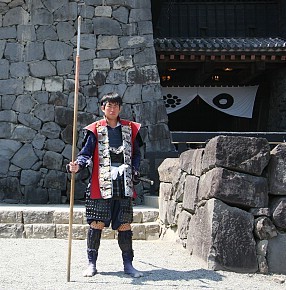
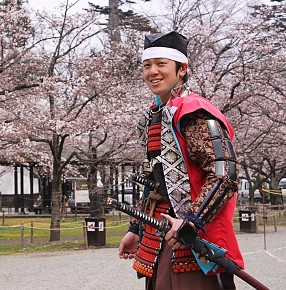
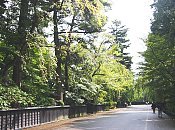
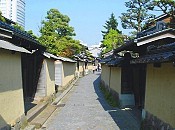
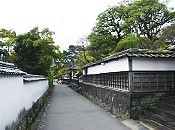
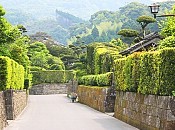
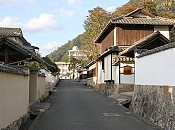
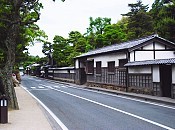
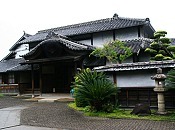
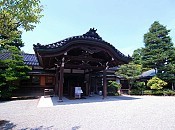
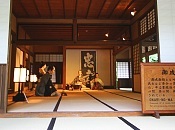
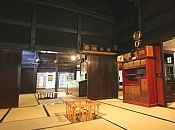







0 komentar:
Posting Komentar